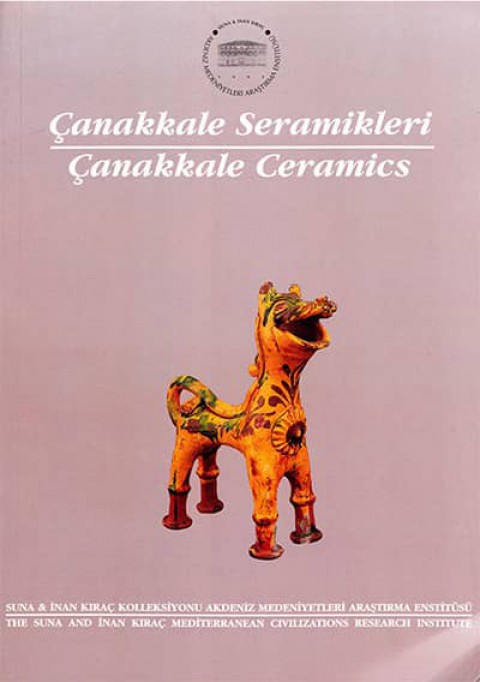Categories
- Symposium Proceedings
- Monographs
- Classical Philology
- Prehistory and Archaeology
- Architecture
- Byzantology
- Ottoman Studies
- Islamic Studies
- History
- Linguistic
- Turcology
- Enviromental Studies
- Ethnology
- Judaica
- Numismatics
- Varia
- Photograph
- Fine Arts
- Minority Research
- Literature
- City Monographs
- Law
- Art History
- Bibliography
- Politics
- Excavation Reports
- Anthropology
- E-BOOK
- See All
Monographs - Periodicals
- Anadolu / Anatolia
- Turk Arkeoloji ve Etnografya Dergisi
- Turk Arkeoloji Dergisi
- Archivum Anatolicum
- Adalya
- Aktuel Arkeoloji
- ANMED
- Colloquium Anatolicum
- Archeology Journal
- Archeology and Art
- Gephyra
- Kaman-Kalehoyuk
- Journal of Mosaic Research
- Kebikec
- Lykia
- Olba
- Art History Notebooks
- Sanat Tarihi Dergisi
- Studi Micenei ed Egeo-Anatolici
- Tüba-Ar
- Social History
- Arkhe
- kitap-lik
- See All
Periodicals - Series
- Ethnoarchaeological Investigations in Rural Anatolia
- Archeology Results Meeting
- Research Results Meeting
- Studies in Mediterranean Archaeology
- Anatolia Antiqua
- Ist. Forschungen
- Les dossiers de l'Ifea
- Excavation Results Meeting
- Adalya Supplementary Series
- Analecta Isisiana
- Byzas
- Corinth
- IstMitt Band
- IstMitt Beiheft
- Klasik Filoloji Seminerleri
- Les Cahiers du Bosphore
- Museum Studies and Salvage Excavations
- Les Carnets du Bosphore
- Likya Incelemeleri
- SEMA
- SNG
- Patara
- Tabula Imperii Byzantini
- TAY
- Varia Anatolica
- Varia Turcica
- Corpus Vasorum Antiquorum
- Corpus Ponderum Antiquorum
- ASMS
- Hierapolis di Frigia
- Laodikeia Studies
- Tyche
- See All
Series - Dictionaries & Encyclopaedias
- Guidebooks & Travelogues
- Catalogues
- Exhibition Catalogue
- Museum Catalogue
- See All
Catalogues - Antiquarian
- Ephemera / Map / Photo
Ask Us
Bu internet sitesinde sizlere daha iyi hizmet sunulabilmesi için Cookieler kullanılmaktadır. Cookie tercihlerinizi değiştirmek ve Cookieler hakkında detaylı bilgi almak için İnternet Sitesi Gizlilik Politikası’nı inceleyebilirsiniz. Cookie ayarlarını değiştirmeniz durumunda internet sitesinin bazı özelliklerinin işlevselliğini kaybedebileceğini dikkate alınız.



